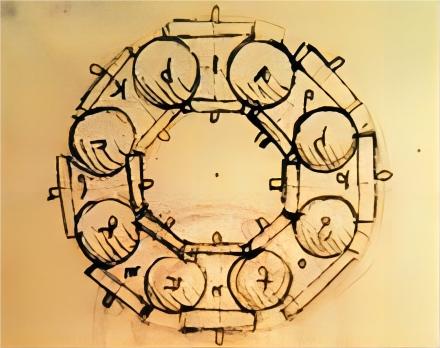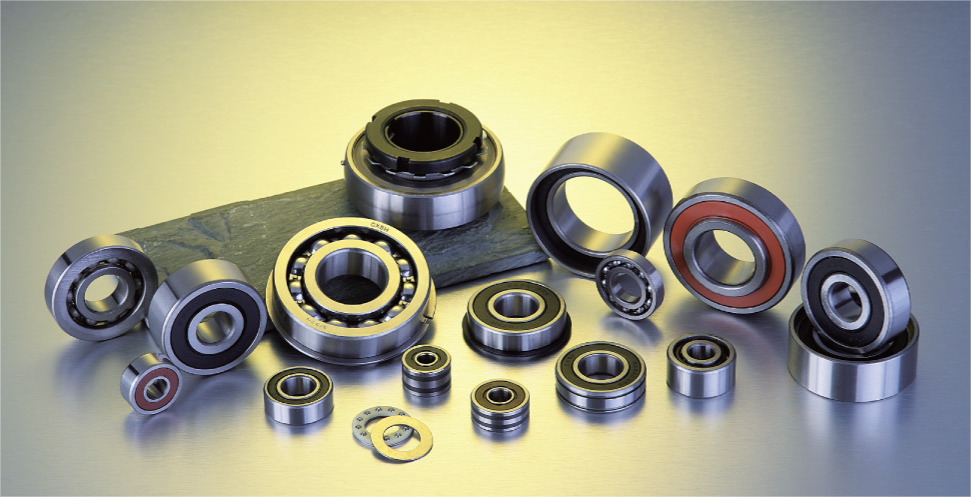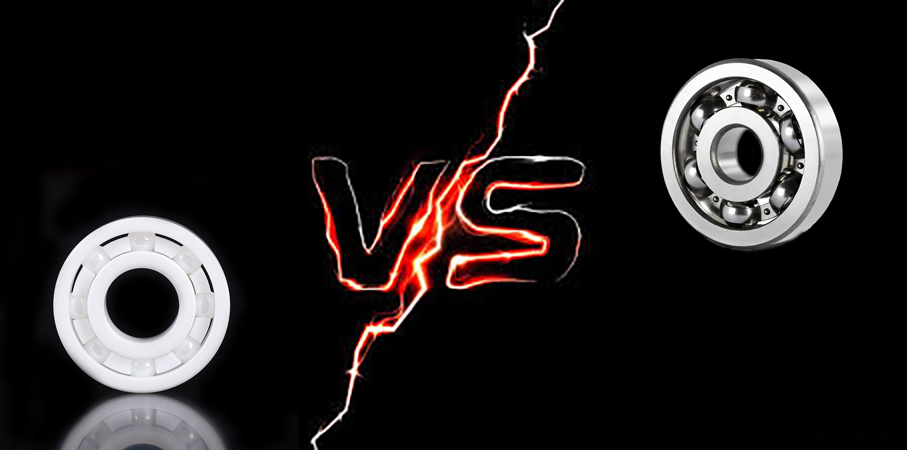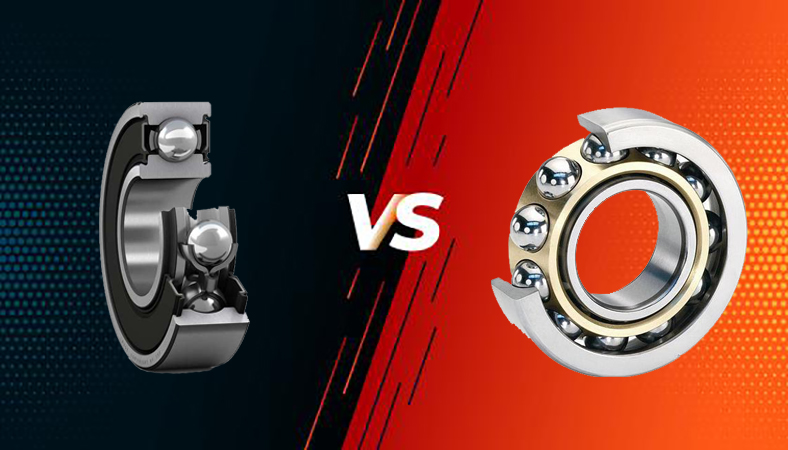Wishlist
The products are limited
The products are limited
As we all know, ball bearings in various industries are indispensable and essential industrial parts. They are all over a variety of machines and play an important role in this article; let us come together to understand the knowledge of ball bearings.
Many years ago, people started to find various ways to reduce friction. An example is the construction of the Egyptian pyramids. It is well known that the stones used to build the pyramids were huge and heavy, so how did people move them in ancient Egypt, where technology was completely undeveloped?
We can see the answer in the murals of the Egyptian pyramids. In the frescoes, we can see logs rolling underneath the enormous stones. The rolling of the logs reduced the friction so that people could move these hefty stones with relatively little force. The record of human friction reduction throughout time varies depending on the period and method, but it can be seen all over the world. This proves the importance of reducing friction for smoother movement throughout human history. (Refer to Wikipedia)

Leonardo da Vinci is an outstanding artist from Italy, but also one of the typical "Renaissance men." It is not too much to call him the "father" of modern bearings. In one of his notebooks, you can see a sketch of a bearing with a structure of two rings and a rolling ball sandwiched between them. The sketch even includes a "cage" so that the balls do not come into contact with each other. This contributed significantly to the development of bearings. It is almost identical to the bearing construction we continue to use today. However, it was many years before such a part was actually built and mass-produced.

During the Industrial Revolution, Steel was mass-produced, and high-strength steel bearings were produced in large quantities for the first time. This meant that bearings could be used in a wide range of industrial fields. The use of bearings in axles was an essential step in the industrial era.
The first step was the ball bearing, which was used in bicycle axles, which used "balls" as rolling elements. This became widely popular. Later, roller bearings were developed. It used "rollers" as rolling elements and was used in the axles of horse-drawn carriages. The advent of bearing-based axles made a giant leap forward in transportation and motion. Almost simultaneously, bearings began to be used in a wide range of industrial machinery, contributing significantly to industrialization. In the course of the industrial revolution, bearings have been in the shadows to help industrial development and have become an indispensable presence for humanity.
The working principle of a ball bearing is similar to the rolling of a wheel. When an external force acts on the bearing, the steel balls are forced to roll, thus forming a straight line of contact. As the steel balls are round, it allows for a smoother movement between the inner and outer rings.
The ball-bearing balls roll between the inner and outer rings, which enables axial and radial support. When axial loads are applied to the bearings, the ball-bearing balls will bear the axial loads, and due to the action of the cage, the balls will be evenly distributed. On the contrary, when radial loads are applied to the bearing, the bearing balls are subjected to radial loads.
Deep groove ball bearings: Deep groove ball bearings have the advantage of low friction and high speed, and they can be used in machine parts subject to radial load or combined radial and axial loads at the same time. They can also be used in machine parts subject to axial loads.
Self-aligning ball bearings : Self-aligning ball bearings are characterized by a spherical outer ring raceway, and self-aligning can compensate for the error caused by different centrifugal and shaft deflection. However, the relative tilt of its inner and outer rings shall not exceed 3 degrees.
Thrust ball bearings: Thrust ball bearings utilize a structure that can withstand thrust loads at high speeds and consist of a washer-like ring with a raceway groove for ball rolling. Since the collar is cushion-shaped, thrust ball bearings are categorized into two types: flat-bottomed cushion type and self-aligning spherical cushion type. In addition, these bearings can withstand axial loads but not radial loads.
Angular Contact Ball Bearings: Angular Contact Ball Bearings can simultaneously withstand radial loads and axial loads. They can work at very high speeds—the more significant the contact angle, the higher the axial load-carrying capacity.

Steel material: Steel ball bearings are the most common ones, mainly made of high-carbon steel, medium-carbon steel, and high alloy steel. Among them, high carbon steel is the most common material, suitable for a general light load and low-speed conditions; Medium carbon steel is mainly used for medium load and higher-speed conditions. High alloy steel has high strength, corrosion resistance, and high toughness, making it suitable for a hefty load and high-speed conditions.
Stainless steel material: Stain steel ball bearings have good corrosion resistance and strength and are commonly used in high humidity, acid, and alkali-strong environments.
Ceramic material: Ceramic ball bearings are suitable for high speed, high temperature, high load, and corrosive medium working conditions because of their high strength, hardness, and wear resistance.
Plastic material: Plastic ball bearings are suitable for high speed, low noise, and light load conditions due to excellent vibration absorption, heat insulation, transparency, and self-lubrication.

Ball bearings are a common type of bearings with the following main advantages:
High load-carrying capacity: The inner and outer rings of ball bearings are spherical, making it possible to withstand radial, axial, and composite loads. Ball bearings often are used in industrial machinery, especially in the field of heavy loads.
Small coefficient of friction: Compared with other types of bearings, ball bearings have a small coefficient of friction and low friction heat. Hence, it takes work to produce an overheating phenomenon to ensure the stability of bearings and long-term operation.
Wide speed range: The speed of ball bearings can be very high, and they are widely used in high-speed operation and other high-speed machine work occasions.
Easy installation: Ball bearings are simple in structure and easy to install, which reduces the loss caused by misoperation during installation and lowers the cost of operation and maintenance.
The Annular Bearing Engineering Committee (ABEC) was founded over 50 years ago as a subset of the American Bearing Manufacturers Association (AMBA). Designed to establish acceptable tolerances and specifications for the dimensional and geometric accuracy of all bearings. including ABEC1, ABEC3, ABEC5, ABEC7, ABEC9, a total of five grades. Unlike the P grade, the ABEC grade is based on a set of standardized tests to define the bearing accuracy.
Compared with the P grade, the ABEC grade has a higher accuracy class and higher performance requirements in terms of rigidity, speed, noise, and vibration.
P grade refers to the maximum value of bearing ID, OD, width, and limit deviation. P grade is subdivided into five grades: P0, P6, P5, P4, and P2, of which P0 is ordinary accuracy, P6 is regular accuracy, P5 is precision bearing accuracy grade, P4 is high precision bearing grade, and P2 is ultra-precision bearing grade.
Please see the corresponding table below:
ABEC | ISO | DIN |
ABEC 1 | Normal | P0 |
ABEC 3 | Class 6 | P6 |
ABEC 5 | Class 5 | P5 |
ABEC 7 | Class 4 | P4 |
ABEC 9 | Class 2 | P2 |
In the development and design of engineering ceramic products, ceramic ball bearings are engineering ceramics in the industrial category of the classic case of extensive use by many countries in the high-speed precision bearings, the use of more mixed ceramic ball bearings, that is, the rolling body using hot-pressed Si3N4 ceramic ball, bearing ring is still a steel ring. This kind of bearing standardization degree is high, the machine tool structure change is small, convenient maintenance, especially suitable for high-speed operation occasions, its assembly of high-speed spindle, with high speed, high rigidity, high power, long service life of these advantages.
This is because the ceramic ball itself has self-lubricating characteristics, so the lubrication can be used according to the provisions of the lubricating grease and can also be added. Seals can also be used according to the provisions of the choice of ceramic ball, not with seals.
Keeper can also be used according to the provisions of the use is not used, so the collar, rolling element is the bearing two elements can not be missing; when these two elements are not the same material, we get the mixed bearing said.

(1)Different materials: The balls of steel ball bearings are made of steel, while the balls of ceramic bearings are made of ceramic;
(2) Different service life: The service life of ceramic bearings is longer than that of steel ball bearings because the ceramic balls have better wear resistance, high-temperature resistance, and corrosion resistance;
(3) Different movement effects: ceramic bearings in high-speed movement with less noise, lower energy consumption, and smoother movement, while steel ball bearings in high-speed movement with more noise, higher energy consumption, and less smooth movement;
(4) Different prices: Ceramic bearings of the same size are more expensive than steel ball bearings.

(1) Advantages of ceramic bearings:
*Long service life, life greatly exceeds steel ball bearings, which helps to reduce the number of bearing replacements;
*The corrosion and chemical corrosion has an excellent resistance in pulling considerable control to reduce the bearing failure;
*With low friction, low energy consumption, high speed;
*High reliability, lower maintenance costs, and more friendly to the environment.
Disadvantages of ceramic bearings:
*More expensive;
*Easy to break, especially in the case of large inertia easily damaged.
Advantages of steel ball bearings:
* low manufacturing cost;
*can carry a large force, suitable for high loads and heavy loads in the field of mechanical transmission;
*They have good fatigue resistance and toughness, and in the field of mechanical transmission, they are more widely used.
Disadvantages of steel ball bearings:
*Compared with ceramic bearings, they have a short life and need to be replaced constantly.
The difference between the angular contact ball bearings and the deep groove ball bearings is mainly reflected in the structure, load-carrying capacity, and precision requirements. The following is a specific description:
Structure difference. The deep groove ball bearing rolling body and inner and outer ring contact angle is zero degrees; simple structure, and angular contact ball bearing through angular contact to bear radial and axial load, and its inner and outer ring contact angle is usually 15 degrees, the structure is relatively more complex.

Load carrying capacity is different. Angular contact ball bearings are able to withstand large radial and axial loads, especially for high-speed and high-precision rotating occasions, while the deep groove ball bearings are mainly to withstand radial loads, suitable for medium load and speed of the occasion.
Precision requirements are different. The precision requirement of angular contact ball bearings is higher than the precision requirement of deep groove ball bearings, which is suitable for higher rotating speeds. In contrast, the precision requirement of deep groove ball bearings is relatively low.
1. High load-carrying capacity and low coefficient of friction
Ball bearings are designed to carry combined axial and radial loads, making them suitable for a wide range of mechanical applications. Due to the spherical design of their rolling elements, ball bearings operate with a low coefficient of friction, resulting in improved rotational efficiency and stability.
2. Suitable for high speeds
Although the speed of the ball bearing may be limited by the design of its rolling elements, within a reasonable range, change in the load, speed, and operating temperature on its performance of the impact is small.
3. Long life and durability
Because of their material properties and structural design, ball bearings usually have a long service life and high reliability.
To summarize, ball bearings bring people much convenience; different kinds of bearings with different materials can fully meet people's needs so as to complete the work efficiently and quickly.
TFL Bearing Company can provide you with all kinds of bearings to meet your various needs; if you have any questions, please contact us at www.tflbearing.com